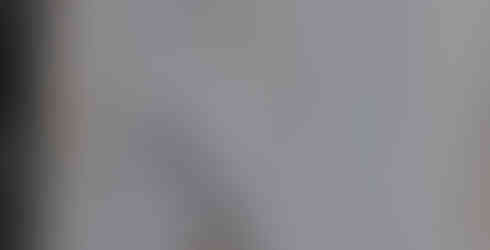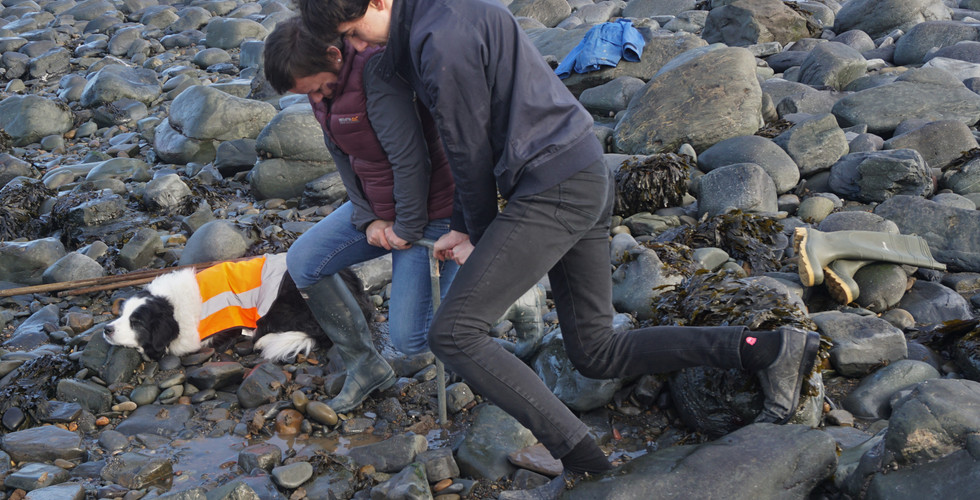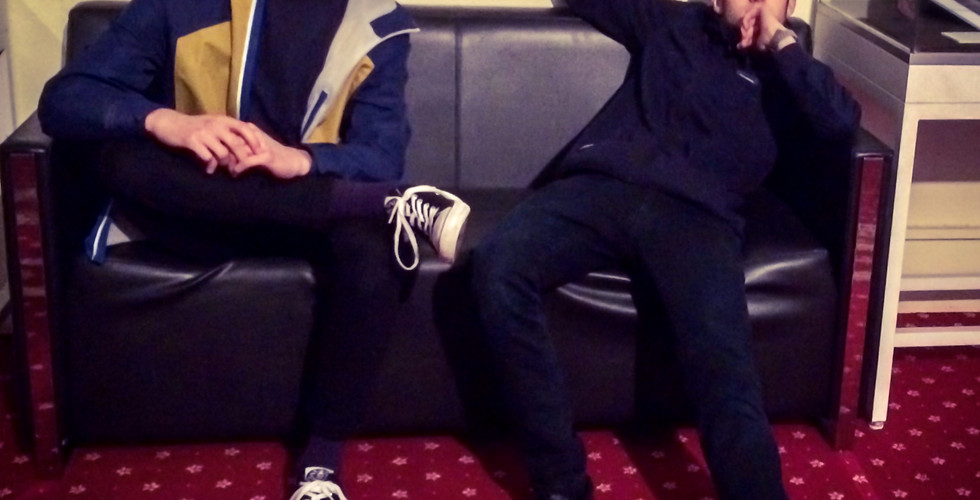Layers in Lampeter
- Erin Kavanagh
- Jan 8, 2018
- 7 min read

On November 3rd 2017, 'Layers in the Landscape' had its second exhibition. This time we forayed south to Lampeter, taking position in the cloisters of OB ('Old Building'). This was no small challenge because it is a much underused exhibition space, in that, to my knowledge only one attempt has ever been made there before and I've sortof been at Lampeter since *ahem* 1993...
Thus, I decided that maybe we could address this.
The first challenge was acquiring display cases - this became a team endeavour, with half a dozen people engaged in the task. I had calculated the maximise amount of space I could inhabit and had an idea what could fill it, approaching the individuals concerned - and then waiting. Deep mapping involves a lot of managerial waiting. As with all other aspects of the project, I could see what I needed it all to look like but had to keep still, hold the space, and allow it to take form naturally.

Once cases were acquired, we set about creating the dispay bases. The spaces were too large for beads or rice, we had no budget and thus fancy lighting and mounts were out of the question. Even the traditional cloth (which I loathe because it shows up every tiny dust mote and always looks rubbish) was too expensive. I consequently went for basic boarding which we cut to size and then blasted to bring out the grain, before staining dark to match the wooden interior of cloisters. Their depth of colour sets off all the artefacts nicely, there's no reflection and the bases are stable which makes balancing items easy.
The antlers themselves, also inspired a hand carved sign (out of reclaimed elm) by the amazing Mark Sawyer.

One of the first people to begin their contribution (and, ironically, the last to cram her space with goodies), was Emily O'Reilly from Carmarthen School of Art. Emily recorded my poem, King of the Sea Trees, using a reel-to-reel recorder.

She then took this recording, along with others from the project (such as Lynne Denman singing) and created a sound cloth with wool, taking on the pattern of music and words. You can hear this method in the making here


Emily's work is, as a consequence, almost a deep map in its own right - which she added to with an installation for opening night, playing a film over clothing made from woven sound.

Next in line was Dr. Denis Bates and his geological deep time.

Silurian and Jurassic jems from the rocky coast were his layers, with Graptolites and the earliest Welsh 'forest'. His display, collected for me by his son, Martin, also included an intriging graptolite cartoon by the late Nancy Kirk (Centre pic below).


As you can see here, the stained and burned wood display bases worked nicely, creating an organic and unobtrusive appearance.


For the labels, I opted for Bodoni MT font because it was the closest I could get to what would likely have been used in the Old College if this exhibition had been curated back in the 1820's. Ideally, I would have used Kennerley, as created for Gregynog Press and used for their first ever publication (a collection of George Herbert's poetry).
However I was unable to get a response from anyone in order to do so, nor to use the amazing image one can find on the linked page of an illustration of a stag, in a children's book called 'The Story of a Red Deer' (1935/6). His incarceration by barbed wire in the picture, one of the first printed in colour by the Davies sisters, is particularly poignant.
Nonetheless, the labels work in Bodini. They, like the case contents, are in flux - with sometimes there being no labels at all in order to not dicate context of chronography to the artefacts. They are deliberately unsophisticated, echoing the more Antiquarian style that one can find in older museums such as those in Cambridge.
The manner in which we mounted the antlers themselves was less traditional, again due to being pragmatic (thanks Mark!). Here they are going up and later whilst decorated for Yuletide (during which season there was an unusual amount of stag related paraphenalia available locally, odd that...).


Beneath the antlers went the Time Scroll.
We've waited a year to finally be able to display this - and it was no easy task due to it being 9m in length and very fragile.
Luckily lots of passers by came to our rescue and by collective effort we made what had been an utter nightmare to plan, look easy in the final moments. Rather than attempting to make this piece look like a saleable artwork, I chose to reflect the process nature of its essence. Hence it is taped on to cutting board with vivid yellow specialist tape, which can peel off without damage. This alone was a mammoth (ha ha) task. It would, undoubtedly, have been easier to laminate and roll (certainly where showing it elsewhere is concerned!) - but this is not a stylised, polished, creation - nor did it ever intend to be. It is thinking-through-images. Rather like the science notebooks. A fair proportion of the content is incorrect though, despite the intention having been to follow the formal timeline and KST poem. Rather than detracting from the effect however, this is a bonus because it causes people to think. It allows for a consideration about what is being represented, why, how and if there is any evidence to back up the artistic claims being made. It opens more questions than it answers, whilst being visually satisfying.

Another accidental anomaly that nonetheless works beautifully, are the ceramic mammoths by Val Price-West.
Initially, Val (a graduate from Carmarthen School of Art) intended to bring Stag sculptures, made specifically for the exhibition. Then there was a power cut and the firing was delayed... she consequently arrived at the gates (having also had a flat tyre en route) with an alternative in the form of a climate change sculpture, almost a miniature representation of a family's Gilgamesh.
At which point, she looked at the Time Scroll and said: "I'll be back!" - returning the next day with the three mammoths.

Alongside the ceramics and fabric, is a case produced through teaching at UWTSD. The first layer of which involves two postgraduate students, Martin Bates, Ros Coard and her son Joe, who is now a geography student at Aberystwyth. Together they augered and sampled at Tan y Bwlch, where half of the second film was shot, finishing off the work we began there eighteen months earlier - supervised by Archaeo-Dog.

Along again from the teaching case, is one for Borth Station Museum, which includes the Little Green Book with visitor layers to the ongoing story. A recording of these stories, poems, pictures and anecdotes plays nearby on a screen, accompanied by the soundtrack of Dafydd Eto from Three Legg'd Mare singing The King's Shanty.

Also on the screen is, of course, the second film - with headsets attached in order to hear the audio without disrupting the immediate environment (except when people singalong!).

We also have, of course, the KST poem, the full version of which can be read here

Plus The Thin Deep Map, Seithenhin Translation, banners, leaflets...

...and a visitor table with free postcards and a book for feedback sketches etc, as before.

Once set up and running, Part Two of the day commenced. This involved an extended seminar paper upstairs in the Founder's Library, explaining the project, chaired by the wonderful Prof. Mererid Hopwood, who is a poet and scholar of extraordinary talent and skill. It was a total honour to have her not only oversee the event, but to add her own layer to story too.



Following the Q&A, we tramped back down the red carpet into Cloisters for the formal exhibition opening, begun by Lynne Denman's exquisite voice.



Mererid spoke eloquently and bilingually about the cultural history that LitL represents, emphasising the importance of interdiscplinarity and innovation - before gifting the project an original cynghanedd, which will soon be framed and added into the display.

Then it was time for Part Three! Which included reinstigating another abandoned tradition, that of using the Old Hall as a music venue. Previously this has hosted amazing gigs, back from its halycon days as the epicentre of college life and right up to as recently as 2012 ('Hunting the Giant's Daughter'). This old refectory (eventually...) became the stage for our finale.

This was, of course, Three Legg'd Mare.


The Student Union provided a bar and the acoustics were superb. Why this hall is no longer used for Town and Gown events I really don't understand - as a shopwindow for college it would be impossible to find somewhere better. It's also convenient for access (although not fully disabled friendly due to there being some steps whichever entrance is used), there are toilet facilities, room for a bar/coffee/tea, it's neither too big nor too small and it's easy to walk to from town in order to deal with any parking issues. Perfect.
All in all, the event seemed to go off swimingly - albeit through a bit of an exhausted haze for me at least. The exhibition itself has already been the backdrop for an Open Day,

where it leant itself perfectly to having tables around, offering family members something to peruse whilst the prospective candidates explored their options. Local school pupils have used it for their art projects, students for inspiration and subject matter for further study. It was dressed beautifully for Yuletide with lights and decorations, including a tree and complimentary Christmas card.


Overall, it was a wonderful way to say goodbye to the Year of Legends. My thanks extends to the now nearly eighty people who have been involved in this project - without all of you, none of this could have happened. Plus also to the prvate benefactors and the ISRF for funding support - even mythical beings need pennies in order to be heard.
Here's to the Year of the Sea, 2018,
who knows what new layers remain waiting for us still to discover...

All images are copyright of Layers in the Landscape 2017.
For further information about the project to date then go out webpage here
We're particularly interested in *ahem* branching out further through education and the media, if this is you or you simply want to know how to get involved, learn more or visit the exhibition, then you can contact us either on Twitter @BreninYCoedMor or Facebook @KingOfTheSeaTrees or via email at kingoftheseatrees@gmail.com.





































































































Comments